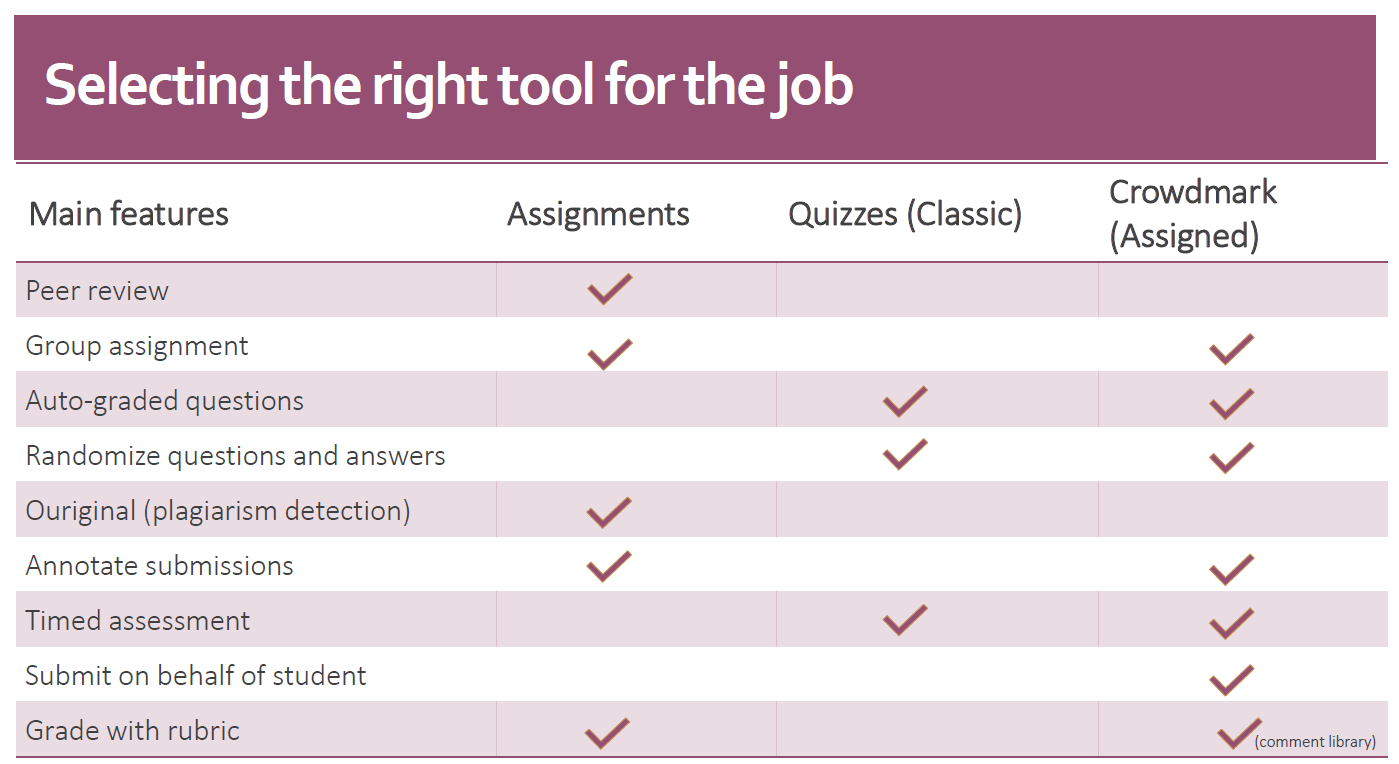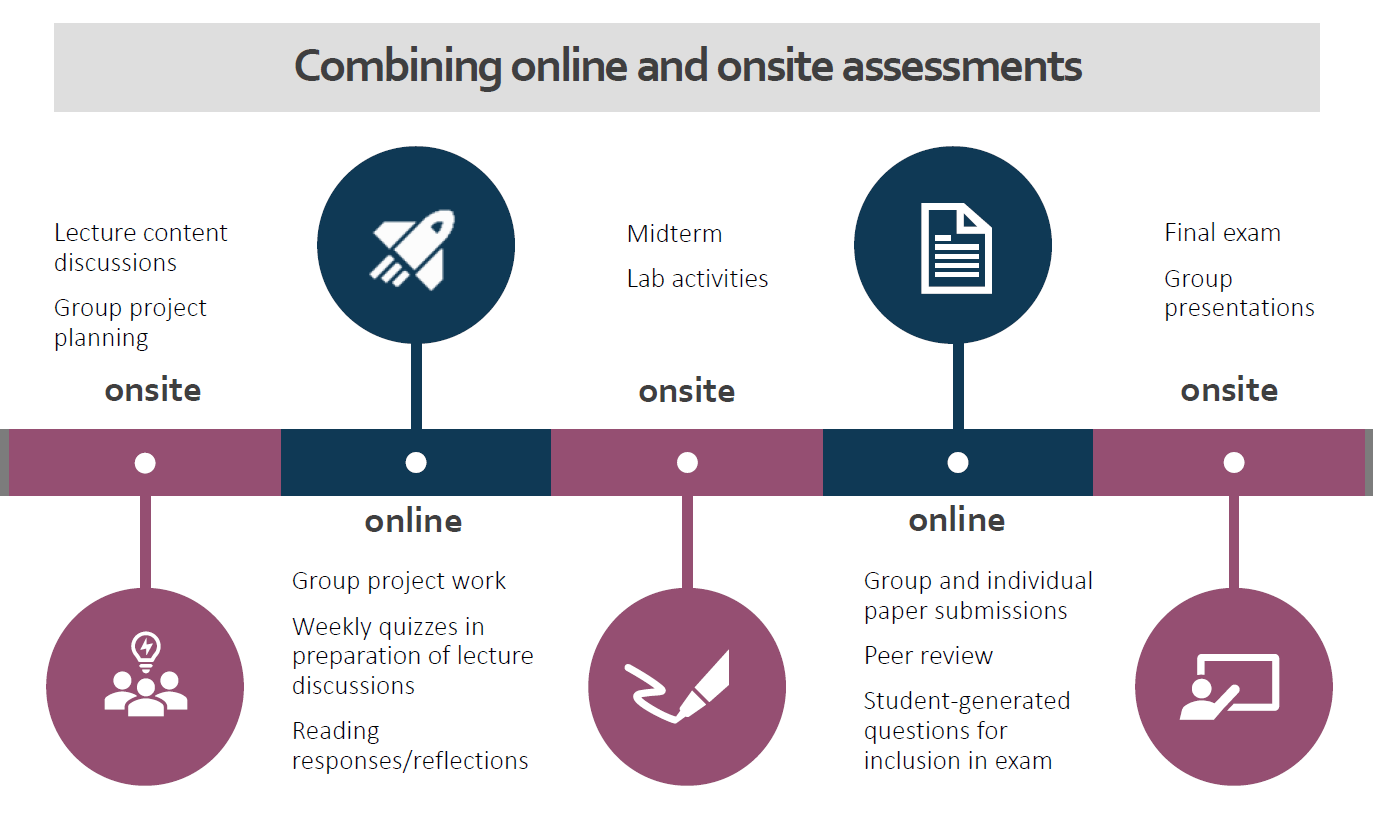Integrating online assessment into your on-campus class
We encourage you to review the slide deck shared during Anna's session--Integrating online assessment into your on-campus class: A blended approach to assessment and feedback for learning. The slide deck is also available for preview at the end of this article. In this session, we discussed the rationale, advantages, tools, application and design for assessments.
Review the slide deck to answer these questions:
- Why use online assessments for an in-person class? (Beginning Slide 05)
- What are some advantages for using a blended approach? (Beginning Slide 08)
- What tools can I use for online assessment and feedback? (Beginning Slide 12)
- How can online assessment be incorporated in an in-person class? (Beginning Slide 21)
- What are some recommendations for designing online assessments? (Beginning Slide 23)
At the ETO, we like to support you in choosing the right tool for your goals. Here are a few handy slides that provide an overview of this sessions content. For more details, please view the full slide deck.
Selecting the right tool for the job
The table below illustrates the three most commonly implemented assessment tools at FASE: Assignments, Quizzes (Classic), and Crowdmark (Assigned Assessments).
Combining online and onsite assessments
This timeline illustrates how a student might experience different parts of the course in different modalities over time. The example includes the learner moving between onsite and online learning activities, with the diagram depicting an onsite actiivty (e.g., lectures group project planning), moving online (e.g., group project work, weekly quizzes, reading responses), back to an onsite activity (e.g.,, formative assessment, lab activity), followed by an online activity (e.g., paper submissions, peer review activity, authoring questions for inclusion in exam), and then ends with an onsite activity (e.g., summative final exam, group presentation).
Assessment Design Checklist (with a learner-centered approach)
- Align with learning outcomes
- involve the learner
- reduce unnecessary barriers
- offer flexible, authentic options
- inform instructional design & practice
- are frequent and formative
This checklist has been adapted from Meyer, A., Rose, D.H., & Gordon, D. (2014). Universal Design for Learning: Theory and Practice . Wakefield, MA: CAST Professional Publishing.


